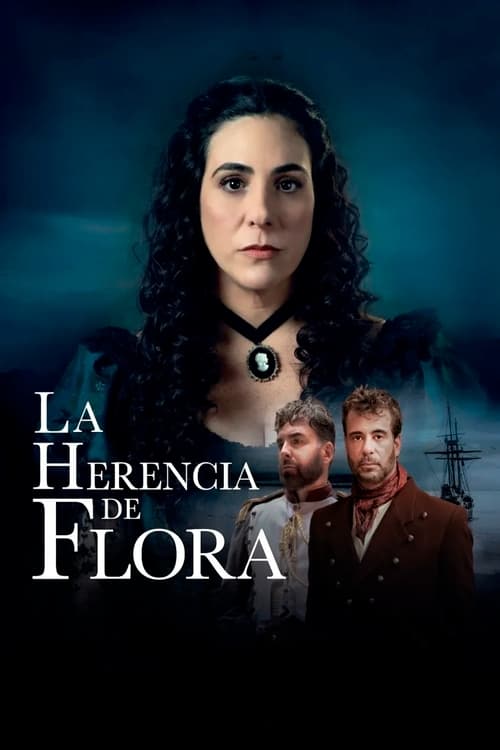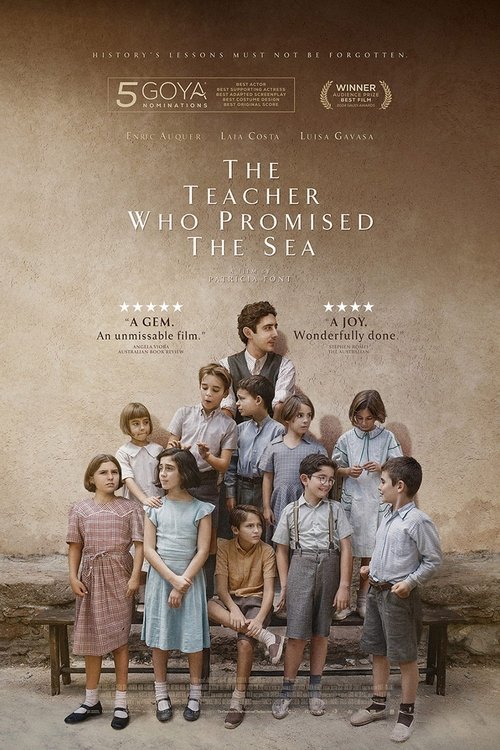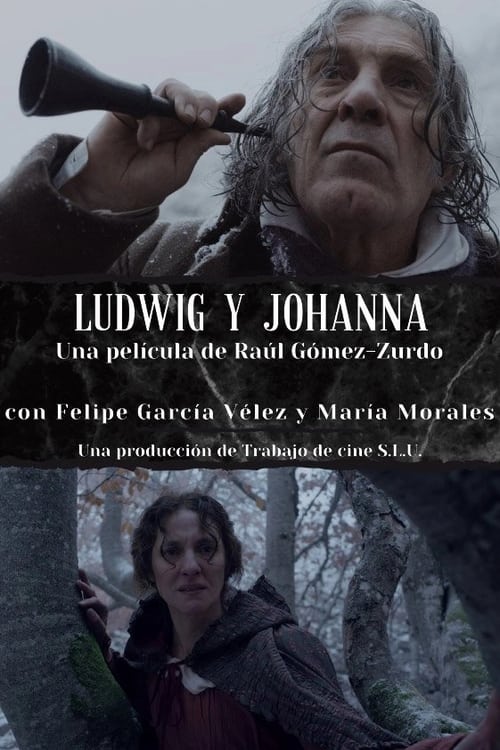
Ask Your Own Question
What is the plot?
The film opens with a hauntingly elegant scene: an orchestra tunes up in a grand hall, while backstage, a large group of men prepares nervously for a momentous event. This sets the tone for a story that will unfold in the shadows of early 20th-century Mexico City, 1901, where appearances mask deep secrets.
We are immediately introduced to José Ignacio Mariano Santiago Joaquin Francisco de la Torre y Mier, known simply as Ignacio de la Torre (Alfonso Herrera), a wealthy politician and hacienda owner. His marriage to Amada Díaz (Mabel Cadena), the illegitimate mixed-race daughter of President Porfirio Díaz (Fernando Becerril), is a lavish affair steeped in political calculation. The wedding, set in the opulent surroundings of Mexico's elite, is a spectacle designed to cement Ignacio's social standing and political ambitions. Yet, beneath the surface, tension simmers. The wedding night is a disaster; Ignacio is unable to consummate the marriage, leaving Amada and her powerful father desperate for an heir. The camera lingers on Amada's face, a mixture of hope and dawning despair, while Ignacio's avoidance speaks volumes of his concealed truth.
Ignacio's life is a study in duality. Publicly, he is the dutiful son-in-law and rising political star; privately, he is a man suffocated by societal expectations and yearning for freedom. This dichotomy is visually reinforced by the physical layout of their mansion, where Ignacio and Amada occupy separate wings, their interactions cold and formal. Amada's initial sweetness hardens over time, her eyes reflecting the pain of betrayal and the crushing weight of societal shame.
Seeking escape, Ignacio is drawn into a clandestine gay society, a secret world where men dress in women's clothing and revel in forbidden pleasures. This underground club is a stark contrast to the rigid, oppressive world above. Here, the film's palette shifts--colors become richer, lighting softer, and the camera captures the men's performances and interactions with a tender intimacy. Ignacio meets Evaristo Rivas (Emiliano Zurita), a fellow privileged politician and his lover. Their relationship begins with a charged initiation scene that evolves into an orgy, signaling that their bond transcends mere lust. Their stolen moments are filled with genuine affection; a kiss lingers, a glance holds unspoken promises. Evaristo represents the possibility of authentic love and freedom, a beacon amid Ignacio's repression.
Meanwhile, Amada's suspicions grow. She senses the betrayal but is trapped by her role as the President's daughter and Ignacio's wife. Her attempts to control Ignacio intensify, her demeanor shifting from hopeful to cold and determined. In a confrontation charged with desperation, she demands, "You will be the man I married, or nothing at all." Ignacio's silence in response is a painful admission of his entrapment.
As the narrative builds, the tension culminates in the infamous event that lends the film its title: the "Dance of the Forty-One." On the night of November 17, 1901, a private home on Calle de la Paz becomes the stage for a secret drag ball attended by 42 men, 19 of whom are dressed in women's clothing. The atmosphere is electric, a rare moment of joy and defiance. Ignacio and Evaristo, hand in hand, prepare to escape together after the dance, dreaming of a new life beyond the suffocating constraints of their world.
But their plans are shattered when the police burst in, conducting an illegal raid. The camera captures the chaos--the men scrambling, some frozen in shock, others defiantly holding their ground. The raid is brutal and humiliating, exposing the hidden lives of Mexico's elite to public scorn. Ignacio is arrested alongside the others, but his privileged status soon becomes apparent. While the other 41 men face harsh legal consequences, Ignacio is allowed to return home, still wearing a dress, shielded by his connection to President Díaz.
The aftermath is devastating. The 41 men, stripped of their freedom, are convicted and conscripted into the army, sent to fight in the brutal Caste War in Yucatán. Twelve of them, unable to pay for their freedom, face even harsher fates--prison and hard labor in work camps. The film does not shy away from this grim reality; scenes of the men's suffering in the camps are stark and harrowing, a powerful indictment of the cruelty born from prejudice.
Ignacio's survival is bittersweet. He returns to a life of duplicity, his freedom curtailed in a different way. The final scenes show him walking alone through the empty halls of his mansion, the weight of his secret heavier than ever. Amada, now distant and resigned, occupies her own wing, their marriage a hollow shell. The film closes on a note of quiet tragedy--no dramatic redemption, only the lingering pain of lives shattered by intolerance.
No deaths occur directly in the film's narrative, but the fates of the 41 men conscripted to the army imply a grim future, with many likely perishing in the Caste War. Ignacio and Evaristo's relationship, while deeply felt, ends in forced separation by societal forces beyond their control. The film's power lies in its unflinching portrayal of systemic injustice and the devastating personal costs of living a double life in an unforgiving society.
"Dance of the Forty-One" ends not with a flourish but with a haunting silence, a reminder that history's outsiders often pay the highest price for their truth.
More Movies Like This
Browse All Movies →What is the ending?
In the ending of "Dance of the Forty One," the main character, Ignacio de la Torre, faces the consequences of his secret life as a gay man in a repressive society. After a police raid on a clandestine gathering, Ignacio's world unravels, leading to a tragic conclusion that highlights the societal pressures and personal sacrifices he endures.
As the film draws to a close, the tension escalates. The scene opens with Ignacio and his fellow dancers enjoying the vibrant atmosphere of the clandestine ball, unaware that their freedom is about to be shattered. The camera captures the joy and liberation of the moment, with colorful costumes and lively music filling the air. Ignacio, played by Alfonso Herrera, is seen dancing passionately, embodying the spirit of defiance against societal norms.
Suddenly, the mood shifts dramatically as police officers burst into the venue, their presence stark and oppressive. The revelers are caught off guard, and panic ensues. The camera focuses on Ignacio's face, a mix of fear and determination as he realizes the gravity of the situation. He attempts to escape, but the officers begin rounding up the attendees, leading to a chaotic scene filled with shouts and confusion.
In the aftermath of the raid, Ignacio is confronted by the harsh reality of his situation. The film portrays the emotional turmoil he experiences as he grapples with the loss of his freedom and the potential repercussions for his family. His wife, Amada, played by Mabel Cadena, is depicted in a state of despair, torn between her love for Ignacio and the societal expectations placed upon her. The tension between them is palpable, as she struggles to understand the man she thought she knew.
As the narrative progresses, Ignacio faces the consequences of his actions. The film depicts a poignant moment where he is forced to confront his identity and the sacrifices he must make. The emotional weight of his choices is evident as he reflects on the love he has for Amada and the life they built together, juxtaposed with the desire for authenticity and freedom.
The climax of the film culminates in a heart-wrenching scene where Ignacio is taken away by the authorities. The camera lingers on his face, capturing the pain of separation and the realization that he may never return to the life he once knew. The final moments are filled with a sense of loss, as the vibrant colors of the dance fade into a somber reality.
In the closing scenes, the film shifts to Amada, who is left to navigate the aftermath of the raid. Her journey is marked by resilience as she grapples with the societal stigma attached to Ignacio's identity. The film ends on a note of ambiguity, leaving the audience to ponder the fate of both Ignacio and Amada, as they are forever changed by the events that transpired.
Ultimately, "Dance of the Forty One" concludes with a powerful message about love, identity, and the societal constraints that dictate personal freedom. The fates of Ignacio and Amada serve as a poignant reminder of the sacrifices made in the pursuit of authenticity in a world that often demands conformity.
Is there a post-credit scene?
The movie "Dance of the Forty One," produced in 2020, does not feature a post-credit scene. The film concludes its narrative without any additional scenes after the credits roll, focusing instead on the emotional and historical weight of the story it tells. The film centers around the life of Ignacio de la Torre y Mier, a man who navigates the complexities of love, identity, and societal expectations in early 20th-century Mexico, culminating in the dramatic events surrounding the infamous dance that led to a scandal. The absence of a post-credit scene allows the audience to reflect on the themes and character arcs presented throughout the film.
Who is the main character in Dance of the Forty One and what are their motivations?
The main character in Dance of the Forty One is Ignacio de la Torre, a young and ambitious politician in early 20th century Mexico. His motivations are driven by a desire for social status and acceptance within the elite circles of society, as well as his love for his wife, who is from a prominent family. However, his secret life as a gay man leads him to seek fulfillment and connection in the clandestine world of the dance parties.
What role does the character of Evaristo play in Ignacio's life?
Evaristo is Ignacio's love interest and serves as a catalyst for his internal conflict. He represents the freedom and passion that Ignacio craves but cannot fully embrace due to societal expectations. Their relationship is marked by intense emotional moments, as Evaristo encourages Ignacio to explore his true self, even as Ignacio grapples with the consequences of their love in a repressive society.
How does the dance party serve as a turning point in the film?
The dance party is a pivotal scene in Dance of the Forty One, showcasing the secretive and vibrant world of the LGBTQ+ community in Mexico. It is here that Ignacio and Evaristo's relationship is fully realized, filled with joy and liberation. However, it also becomes a turning point as the party is raided by the police, leading to the exposure of Ignacio's double life and the ensuing scandal that threatens to destroy his reputation and marriage.
What is the significance of Ignacio's marriage to Amada?
Ignacio's marriage to Amada is significant as it represents the societal pressures and expectations of the time. Amada is a strong character who embodies the traditional values of the elite society. Her love for Ignacio is genuine, but she remains unaware of his secret life. The marriage serves as a facade for Ignacio, highlighting his internal struggle between his public persona and private desires, ultimately leading to tragic consequences.
How does the film portray the consequences of the police raid on the dance party?
The film portrays the consequences of the police raid as devastating and life-altering for the characters involved. Following the raid, Ignacio faces public humiliation and ostracism, as his sexual orientation is exposed. The aftermath of the raid leads to a crackdown on the LGBTQ+ community, showcasing the harsh realities of societal intolerance. This event not only impacts Ignacio's personal life but also serves as a commentary on the broader implications of repression and the fight for acceptance.
Is this family friendly?
"Dance of the Forty One" is not considered family-friendly due to its mature themes and content. Here are some potentially objectionable or upsetting aspects that may occur:
-
LGBTQ+ Themes: The film explores same-sex relationships and the societal challenges faced by LGBTQ+ individuals in early 20th-century Mexico, which may be difficult for younger audiences to understand.
-
Sexual Content: There are scenes that depict intimate relationships and sexual situations, which may not be appropriate for children.
-
Violence and Persecution: The film addresses themes of persecution and violence against the LGBTQ+ community, including the fear and consequences of being discovered, which can be distressing.
-
Emotional Turmoil: Characters experience significant emotional struggles, including heartbreak, betrayal, and societal rejection, which may be upsetting for sensitive viewers.
-
Historical Context: The film portrays a historical event that involves scandal and public humiliation, which could be uncomfortable for some audiences.
These elements contribute to the film's overall mature rating and may not be suitable for younger viewers or those sensitive to such themes.



































